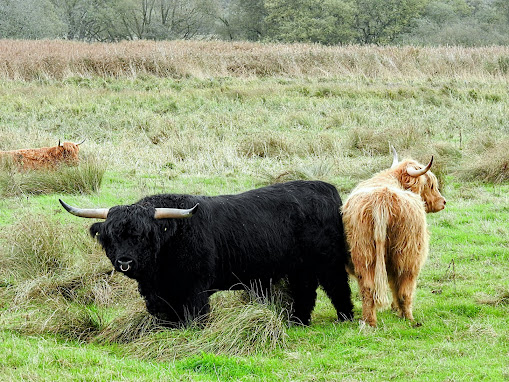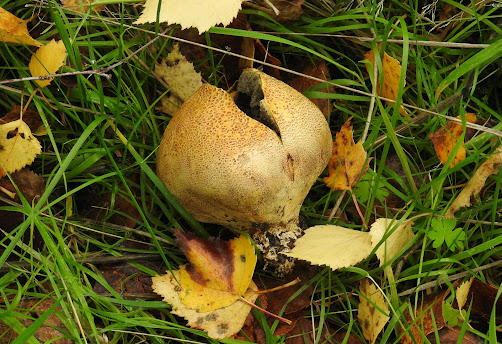Saturday 29th October 2022.
I never put the moth box on last night due to the fact that it would have probably been dark when I made my way to pick up Andy. However, Andy had put his on and I was rewarded with two more new moths for the year. A superb Scarce Bordered Straw and a November Moth was added to my year total, with a supporting cast of a Red-line Quaker, Large Yellow Underwing and the micro moth, Clepsis consimilana. Sadly, no other moths, but real quality there.
It turned out to be a ‘double-dip’ on finding our first Yellow-browed Warbler of the year after another one was reported yesterday along the Canal Path at Titchfield Haven. But despite this disappointment, there was more than enough to keep us happy with some lovely birds seen today. If yesterday was warm, today was even warmer, getting up to around 21 degrees according to my car! Seriously, it was shorts and t-shirt weather while we watched our winter visitors, the Fieldfares and Redwings pouring overhead! And there are still idiots out there who don't believe in Global Warming.
Our trip here kicked off with the Barn Owl perched in its usual tree to the west of the footpath, fast asleep. This was followed up with a check of the Bridge Street Flood for possible Water Pipits, but all I could find were a few Meadow Pipits among a couple of Pied Wagtails. Some Teal were present and at least 4 Black-tailed Godwit and a Lapwing, but nothing else here of note. Overhead, there was a lot of visible migration with Siskins, Redwing and a few Fieldfare going over and even a Redpoll flew east. A few Song Thrushes were noted and our first raptor of the day, a Common Buzzard, was found perched up in a Willow Tree near the flood.
Walking down the path, which was quite busy with dog-walkers, joggers etc, we saw a pair of Great Spotted Woodpeckers in the trees and a Green Woodpecker called nearby, though not seen. We kept checking the sky for any possible Swifts as good numbers of Pallid Swifts have been reported throughout the UK including two this morning over Stoneham, near Southampton!
The Willows and Brambles supported several large Long-tailed Tit flocks and of course, other species always got attached to them including sightings of at least double figures of Chiffchaff and at least 6 Goldcrest, but no sight or sound of any Yellow-browed Warblers. A few Cetti’s Warblers were seen and others heard along the track and only one Reed Bunting was seen this morning. Out on Posbrook Floods, there was a good number of Wigeon and Teal dabbling within the shallow water along with good numbers of Black-tailed Godwit. At least two Common Snipe dropped in to land on the small mud spit, but promptly disappeared out of view.
While watching a lovely flock of Fieldfare (easily our best views of this species so far this season), with a few Redwing among them, we met local birder Dave Wallace and his wife for a chat. He told me about the African moth that was a ‘first’ for the UK, Pseudozarba biparta that was found in Fareham. Apparently, it was in Dave’s moth box! So we chatted about our moth sightings of late before Dave moved on and on meeting him again, he showed us the ‘mines’ of another unusual micro moth, Phyllonorycter rajella! I took a few photos for the record (see photos).
As we were watching the Fieldfares, I heard a Brambling calling somewhere in the neighbouring trees, though it was proving very difficult to locate the bird. A group of finches flew out of the trees and landed in the same bushes as the Fieldfare and low and behold, it was in one of my photos I took of the Fieldfare, a female bird. Other birds heard while we were there included a couple of distant Water Rails over on the east side of the reserve and also some Bearded Tits. The air was so still at times with next to no wind (though the wind did pick up on the way back to the car) that I could hear Jet ski’s way in the distance! A male Kestrel suddenly came from no-where and landed in the same bush as the Fieldfare, scattering all the birds that were there. This evening, on closer inspection of the photo of the bird, I noticed it had rings on its legs and sending a photo to James Cutting (he does a lot of ringing), the bird was actually ringed at Farlington Marshes; on the Deeps in fact!
On the way back, we rested for a while on the new bench overlooking the east side of the reserve (why can't there be more benches along here?). From here, we watched several bird species happily making their way to and fro, but a Glossy Ibis flying northbound towards Posbrook Floods was a nice surprise and later we found the same bird feeding on the Floods, feeding on the same Floods as a Great White Egret! Ten years ago, to see the same sighting in the UK would have been somewhat of a phenomenon, which was somewhat amazing. The Egret soon flew off and headed south as we made our way north. A great morning's birding and then off to our favourite watering hole!
From the good old Chairmakers Arms Pub on the outskirts of Denmead and enjoying a well-earned pint of Cider, we enjoyed quite a few bird species during our couple of hours there. Good numbers of Redwing flew over as well as sightings of a pair of Great Spotted Woodpeckers, a Kestrel, a male Sparrowhawk, Meadow Pipits and a Grey Wagtail. I actually took my binoculars along and both Andy and myself got some odd looks from all the punters there in the garden. I said to Andy, not one person looked up to see a ‘calling’ Great Spotted Woodpecker perched by the garden, which simply goes to show how naive some people are to nature. At least we do.







































































